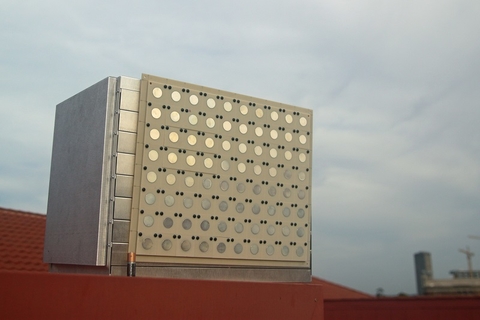More groundbreaking research promises to be in store for researchers in Salt Lake City and New York, thanks to support from the National Science Foundation (NSF).
The NSF, in collaboration with an industry consortium of 28 networking companies and associations, announced it is supporting the development and deployment of the first two Platforms for Advanced Wireless Research (PAWR) projects, based in Salt Lake City and New York City. The goal is to advance the state of the art for wireless technology beyond today's 4G, LTE and emerging 5G capabilities.
"The platforms announced today will enable cutting-edge research in living laboratories across the country, which is a new and important milestone for advancing wireless capabilities," said Jim Kurose, head of the Computer and Information Science and Engineering directorate at NSF, in the announcement. "Innovative wireless networks, technology and applications are key to achieving the vision of future, smart communities."
NSF has committed $50 million toward the research platforms over the next seven years and expects to announce the development and deployment of additional platforms next year. The PAWR Industry Consortium, consisting of equipment vendors, device manufacturers and wireless carriers, has committed $50 million in cash and in-kind contributions that include equipment, expertise and human resources.
Sundeep Rangan, director of NYU Wireless, told IEEE Spectrum that the platforms will allow more thorough testing of some of the big promises of 5G, including applications like VR/AR and autonomous vehicles.
But the test beds are about more than testing 5G. Thyaga Nandagopal, deputy division director for the Division of Computing and Communication Foundation at the NSF, told the publication that they are thinking about things to come after 5G and about a future in which spectrum doesn’t have to be licensed. Test platforms will allow for the development of ways to more dynamically and effectively share available spectrum.
In Salt Lake City, plans call for setting up an advanced wireless research platform that will cover 2.3 square miles of the University of Utah campus, 1.2 square miles of downtown Salt Lake City and a two-mile corridor in between, reaching a potential population of 40,000 people. The research platform is expected to cover dynamic spectrum sharing and advanced wireless antenna technologies.
Researchers from Rice University in Houston will participate in the network. Rice's Reconfigurable Ecosystem for Next-gen End-to-end Wireless (RENEW) technology will underlie a wireless test platform for telecom, tech companies and research institutions announced by the University of Utah.
RELATED: Rice University researchers tackle indoor location detection

massive MIMO like this 80-antenna base station developed
at Rice University. (R. Doost-Mohammady/Rice University)
RENEW will work with the Platform for Open Wireless Data-driven Experimental Research (POWDER) to provide an environment for researchers to test technologies.
"The biggest challenge for the future of wireless communications is not data speeds but scalability, in every sense," said RENEW project leader Ashutosh Sabharwal, professor of electrical and computer engineering at Rice, said in a press release: "There will be order-of-magnitude increases in network nodes, number of users and types of applications. And these networks will have to be everything to everybody. They'll be the backbone connection not just for our smartphones, but for self-driving cars; the lights, water mains and buildings of smart cities; and every imaginable sensor and gadget."
RENEW will incorporate a number of technologies developed at Rice's Center for Multimedia Communications, Texas Southern University's Virtual and Remote Laboratory and the University of Michigan's MobiLab, including Massive MIMO. RENEW will leverage Argos, a fully programmable massive MIMO system developed at Rice and commercialized by Rice spinoff company Skylark Wireless.
RELATED: NYU Wireless part of team awarded NIST grant to study mmWave for first responders
In New York City, the collaboration involves Rutgers University, Columbia University and New York University as well as New York City, Silicon Harlem, City College of New York, University of Arizona and IBM. Plans call for the test bed to cover 1 square mile in a densely populated neighborhood in West Harlem, with a technical focus on ultrahigh-bandwidth and low-latency wireless communications, along with tightly coupled edge computing.
Called COSMOS, the New York platform will also pursue millimeter-wave radio communications and dynamic optical switching technologies, allowing for experimentation at a scale that could not be achieved previously.
“COSMOS is an outdoor laboratory that will allow us to test entirely new classes of wireless applications such as smart intersections that can process massive data in real time,” said principal investigator Dipankar Raychaudhuri, an engineering professor at Rutgers University-New Brunswick and director of its Wireless Information Network Laboratory, in a release.
Oversight of the NSF PAWR effort is being led by US Ignite and Northeastern University.
